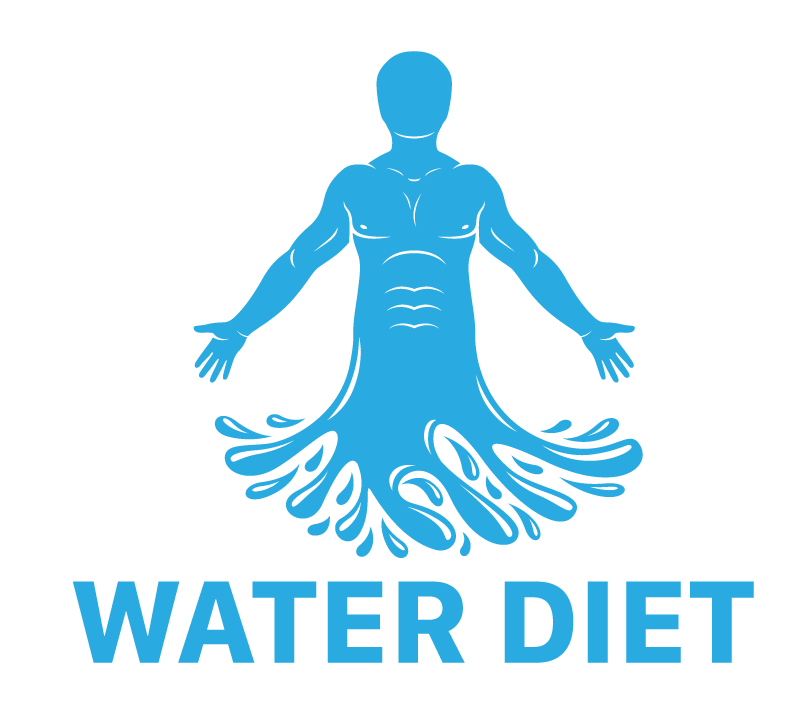Are you looking for the best water diet plan to achieve optimal health and wellness? Look no further! In this article, I will guide you through a tailored program that will help you feel revitalized and promote optimal hydration.
Key Takeaways:
- The best water diet plan can promote weight loss and overall health.
- Consult with a healthcare professional before starting a water fast.
- Set realistic goals, track water intake, and incorporate light exercise in your plan.
- Listen to your body’s thirst cues and choose the right type of water.
- Maintain a well-balanced diet alongside your water diet plan.
Understanding the Water Diet Plan
The water diet plan is an effective way to detoxify your body and kickstart your weight loss journey. With its simplicity and easy-to-follow guidelines, it’s a popular choice for those seeking rapid results. If you’re ready to take the plunge, here’s how to start your water diet plan.
Getting Started
The first step to starting a water diet plan is to set realistic goals. Determine how long you want to follow the plan and what you hope to achieve. It’s important to remember that water fasting is usually done for short periods of time and may not be suitable for everyone. Consulting with a healthcare professional is highly recommended, especially if you have any underlying medical conditions.
Once you have set your goals and received medical clearance, it’s time to track your water intake. It’s important to drink enough water throughout the day to stay hydrated and meet your body’s needs. Aim to consume at least eight glasses of water per day, but listen to your body’s thirst cues and adjust accordingly.
Light Exercise and Balanced Diet
Incorporating light exercise into your water diet plan can help maximize its effectiveness. Engaging in activities such as brisk walking, yoga, or swimming can promote blood circulation, boost metabolism, and aid in weight loss. Remember to start slowly and gradually increase the intensity and duration of your workouts as your body adjusts to the fasting period.
Although the water diet plan primarily focuses on water consumption, it’s crucial to maintain a well-balanced diet when you are not fasting. When you do eat, prioritize nutrient-rich foods such as fruits, vegetables, whole grains, lean proteins, and healthy fats. These foods will provide your body with essential nutrients and support overall health.
| Tip: | During your water diet plan, consider adding lemon or cucumber slices to your water for a refreshing twist. These additions not only add flavor but also provide additional health benefits. |
|---|

“The water diet plan is a great way to kickstart your weight loss journey. It helps flush out toxins and promotes overall well-being. Just remember to listen to your body, stay hydrated, and consult with a healthcare professional before starting.” – Dr. Emily Thompson, Nutritionist.
The Benefits of a Water Diet Plan
Following a water diet plan provides various benefits for your overall health and well-being. Not only can it aid in weight loss, but it can also improve digestion, boost energy levels, and promote clearer skin. Here’s how you can maintain a water diet plan for optimal health.
One of the significant benefits of a water diet plan is its potential to promote weight loss. By replacing high-calorie beverages with water, you can reduce your overall calorie intake and create a calorie deficit, leading to weight loss over time. Water is also known to increase metabolism and suppress appetite, making it easier to control cravings and maintain a healthy eating pattern.
Aside from weight loss, a water diet plan can have positive effects on digestion. Drinking an adequate amount of water helps to prevent constipation and supports the proper functioning of the digestive system. It can also aid in flushing out toxins from the body, promoting a healthier gut and reducing the risk of gastrointestinal issues.
Furthermore, staying hydrated through a water diet plan can boost energy levels and improve cognitive function. Dehydration can lead to fatigue and decreased alertness, while proper hydration helps to enhance brain function and keep you focused throughout the day. By replacing sugary drinks with water, you can also avoid the energy crashes associated with consuming excessive amounts of sugar.

In addition to weight loss, improved digestion, and increased energy levels, a water diet plan can also contribute to clearer skin. Water helps to hydrate the skin from within, giving it a healthy glow and reducing the appearance of fine lines and wrinkles. Staying hydrated also supports the body’s natural detoxification processes, helping to eliminate toxins that can contribute to skin problems.
To maintain a water diet plan, it is essential to track your water intake and ensure you’re drinking an adequate amount throughout the day. Aim to drink at least eight glasses of water or more, depending on your activity level and individual needs. You can use a water tracking app or simply keep a water bottle with you as a reminder to stay hydrated.
Incorporating light exercise into your routine can further enhance the benefits of a water diet plan. Engaging in activities like walking, yoga, or swimming can increase calorie burn and improve overall fitness. It’s important to listen to your body and choose exercises that you enjoy and feel comfortable with.
Remember, it’s crucial to consult with a healthcare professional before embarking on a water diet plan, especially if you have any underlying medical conditions. They can provide personalized guidance and ensure that the plan is suitable for your specific needs.
Summing up, a water diet plan offers various benefits, including weight loss, improved digestion, increased energy levels, and clearer skin. By maintaining a proper water intake, tracking your progress, incorporating light exercise, and consulting with a healthcare professional, you can optimize the benefits and achieve long-term success with a water diet plan.
Ensuring Success with a Water Diet Plan
While a water diet plan can be highly effective for rapid weight loss, it’s important to approach it with caution and take certain steps to ensure success. By setting realistic goals, tracking your water intake, and incorporating light exercise, you can make the most of your water diet plan.
Setting realistic goals is essential when embarking on a water diet plan. It’s important to remember that everyone’s body is different, and what works for one person may not work for another. Start by setting achievable targets that take into account your current health and lifestyle. Gradually increase your water intake and adjust your goals over time to support your ongoing progress.
Tracking your water intake is crucial for keeping yourself accountable and ensuring that you’re staying properly hydrated. There are many apps and water bottles with built-in trackers that can help you monitor your daily intake. Aim to drink at least eight glasses of water a day, but listen to your body’s cues and adjust accordingly. It’s also helpful to spread your water consumption throughout the day instead of drinking large quantities all at once.
Incorporating light exercise into your water diet plan can enhance its effectiveness and promote overall well-being. Engaging in low-impact activities such as walking, swimming, or yoga can help you burn calories and boost your metabolism. It’s important to listen to your body and choose exercises that align with your fitness level. Always start slowly and gradually increase the intensity and duration of your workouts as you build strength and stamina.
Table: Sample Water Diet Plan
| Time | Activity |
|---|---|
| 7:00 AM | Wake up and drink one glass of warm water with lemon |
| 8:00 AM | Light exercise session (e.g., 30-minute walk) |
| 9:00 AM | Drink a glass of water before breakfast |
| 12:00 PM | Consume a healthy, balanced lunch (include water-rich fruits and vegetables) |
| 3:00 PM | Enjoy a cup of herbal tea or infused water |
| 6:00 PM | Engage in light exercise or yoga session |
| 8:00 PM | Drink a glass of water with dinner |
| 10:00 PM | Wind down with another cup of herbal tea before bed |
Remember, it’s crucial to listen to your body’s cues and consult with a healthcare professional before starting a water diet plan, especially if you have any underlying medical conditions. They can provide personalized guidance and ensure that this approach is safe and suitable for you. By following these tips and guidelines, you can optimize your water diet plan and achieve your desired results.
Disclaimer: The information provided in this article is for informational purposes only and should not be considered as medical advice. Always consult with a qualified healthcare professional before starting any diet or exercise program.

Potential Risks of a Water Diet Plan
While a water diet plan can offer incredible health benefits, it’s important to be aware of potential risks. Dehydration, muscle loss, and blood pressure changes are some risks you should consider before starting a water fast. It is always recommended to consult with a healthcare professional to ensure your safety.
Dehydration is a common concern when following a water diet plan because it restricts fluid intake from sources other than water. This can lead to electrolyte imbalances, fatigue, and dizziness. It is important to monitor your hydration levels closely and ensure you are drinking enough water throughout the day.
Muscle loss is another risk associated with a water diet plan, especially if it is followed for an extended period of time. Without proper nutrition, the body may start breaking down muscle tissue for energy, leading to muscle wasting and reduced strength. To mitigate this risk, it is recommended to incorporate light exercise and consume a well-balanced diet when not fasting.
Blood pressure changes can occur during a water diet plan, particularly if you have underlying health conditions. When the body is deprived of food, blood pressure may drop, causing symptoms such as lightheadedness and fainting. If you have hypertension or other cardiovascular issues, it is crucial to consult with a healthcare professional before embarking on a water fast.
| Risks | Precautions |
|---|---|
| Dehydration | Monitor hydration levels and drink enough water |
| Muscle Loss | Incorporate light exercise and maintain a well-balanced diet |
| Blood Pressure Changes | Consult with a healthcare professional, especially if you have underlying health conditions |
It is essential to be informed about the potential risks associated with a water diet plan and take necessary precautions to safeguard your health. Consulting with a healthcare professional, monitoring hydration levels, incorporating exercise, and maintaining a balanced diet are key steps to ensure your safety and optimize the benefits of a water diet plan.
Listening to Your Body and Choosing the Right Water
When following a water diet plan, it’s crucial to listen to your body’s thirst cues and ensure you’re drinking enough water throughout the day. Adequate hydration is essential for maintaining optimal health and supporting your body’s functions. Additionally, choosing the right type of water, such as filtered or mineral water, can provide additional benefits to support your overall well-being.
Listening to your body’s thirst cues means paying attention to when you feel thirsty and responding by drinking water. Thirst is your body’s way of signaling that it needs hydration. By staying hydrated, you can help regulate your body temperature, support digestion, and promote healthy skin.
When it comes to choosing the right type of water for your water diet plan, there are a few options to consider. Filtered water can remove impurities and contaminants, ensuring that you’re consuming clean and safe water. Mineral water, on the other hand, contains beneficial minerals such as calcium and magnesium, which can contribute to your overall nutritional intake. Both options can provide hydration and support your body’s hydration needs.
Remember, maintaining a well-balanced diet alongside your water diet plan is crucial. While fasting, it’s important to ensure you’re getting essential nutrients from other sources to support your body’s needs. Incorporating fruits, vegetables, and other nutrient-rich foods into your diet can help provide the necessary vitamins and minerals. Consult with a healthcare professional or nutritionist to develop a well-rounded eating plan that complements your water diet plan.

| Type of Water | Description |
|---|---|
| Filtered Water | Water that has been purified by removing impurities and contaminants. |
| Mineral Water | Water that naturally contains minerals such as calcium and magnesium. |
Maintaining a Well-Balanced Diet
While a water diet plan may restrict your food intake, it’s vital to maintain a well-balanced diet when you’re not fasting. Incorporating nutrient-dense foods and ensuring you’re meeting your body’s nutritional needs is key to supporting your overall health and well-being.
When planning your meals, focus on incorporating a variety of fruits, vegetables, whole grains, lean proteins, and healthy fats. These foods provide essential vitamins, minerals, and antioxidants that help support your immune system, promote healthy digestion, and provide energy for your body.
To make it easier to stay on track with your balanced diet, consider creating a meal plan and shopping list. This will help you stay organized and ensure that you have all the necessary ingredients on hand. Additionally, try to prepare your meals at home as often as possible, as this gives you more control over the ingredients and portion sizes.
| Meal | Food Group |
|---|---|
| Breakfast | Whole grain oatmeal with berries and a handful of nuts |
| Lunch | Grilled chicken salad with mixed greens, veggies, and a homemade vinaigrette dressing |
| Dinner | Baked salmon with roasted vegetables and quinoa |
Remember to also stay hydrated throughout the day, even when you’re not fasting. Water is essential for maintaining proper bodily functions and helps transport essential nutrients to cells. Aim to drink at least eight glasses of water per day, or more if you’re physically active or in a hot climate.

Incorporating a well-balanced diet alongside your water diet plan is crucial for supporting your overall health. By nourishing your body with wholesome foods, you can ensure you’re getting the necessary nutrients and maintaining optimal well-being.
Conclusion
Following a well-planned water diet can be a game-changer for your health and wellness. By embracing the benefits of hydration and incorporating a balanced approach, you can achieve your goals and experience the revitalizing effects of a water diet plan.
Water fasting, a type of fast that restricts everything except water consumption, has been associated with potential health benefits such as weight loss, reduced risk of chronic diseases, and promotion of autophagy. However, it’s essential to be aware of the potential risks involved, such as muscle loss, dehydration, and blood pressure changes.
Before embarking on a water fast, it’s crucial to consult with a healthcare professional, especially if you have certain medical conditions. Setting realistic goals, tracking your water intake, and incorporating light exercise can help maximize the effectiveness of your water diet plan and achieve rapid weight loss.
Listening to your body’s thirst cues and choosing the right type of water play a significant role in maintaining hydration and overall health. Additionally, it’s important to maintain a well-balanced diet when not fasting to ensure you’re getting essential nutrients from other sources to support your body’s needs.
FAQ
What is water fasting?
Water fasting is a type of fast that restricts everything except water consumption.
What are the potential health benefits of water fasting?
Water fasting is associated with potential health benefits such as weight loss, reduced risk of chronic diseases, and promotion of autophagy.
Are there any risks associated with water fasting?
Yes, water fasting can have risks such as muscle loss, dehydration, and blood pressure changes. It is important to consult with a healthcare professional before starting a water fast, especially for those with certain medical conditions.
How should I approach a water diet plan?
It is recommended to set realistic goals, track water intake, and incorporate light exercise while following a water diet plan.
How do I choose the right type of water for my water diet plan?
It is crucial to listen to your body’s thirst cues and choose the right type of water for your water diet plan.
Do I need to maintain a well-balanced diet alongside my water diet plan?
Yes, it is important to maintain a well-balanced diet alongside your water diet plan to ensure you’re getting essential nutrients while fasting.




